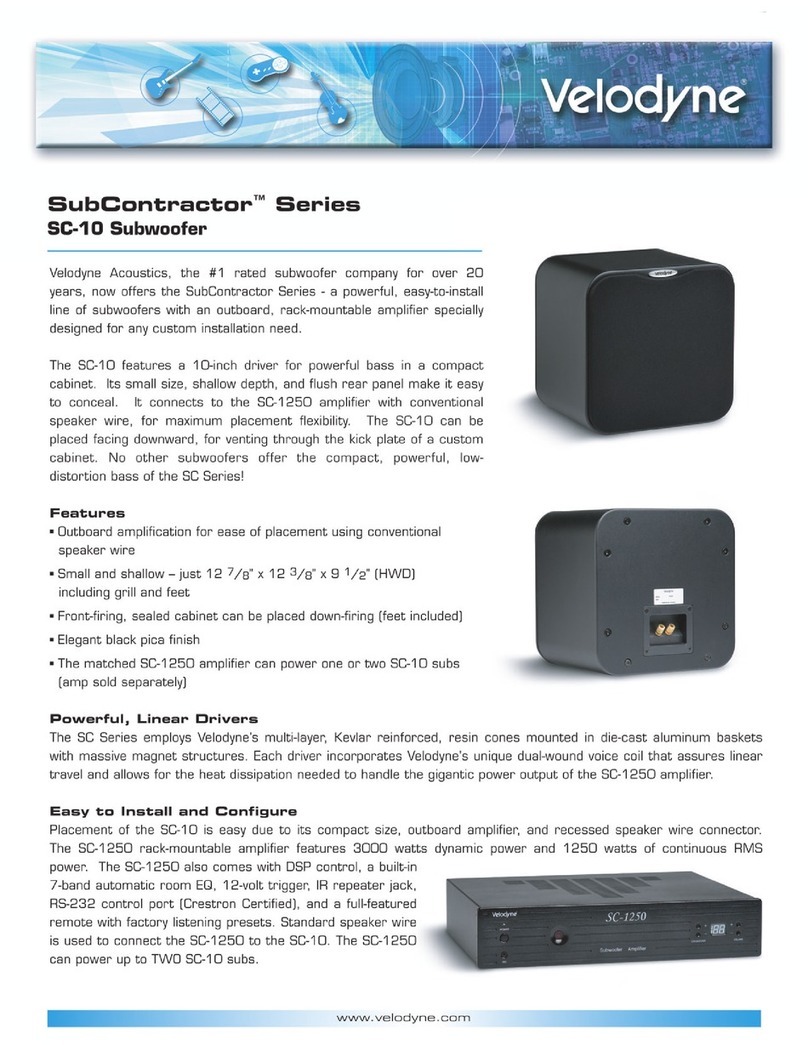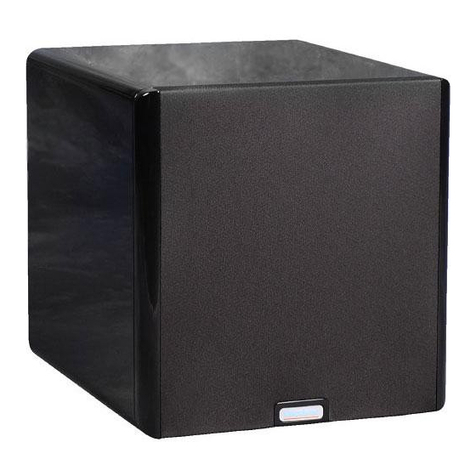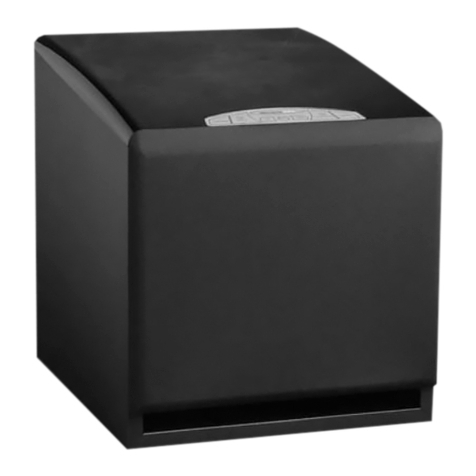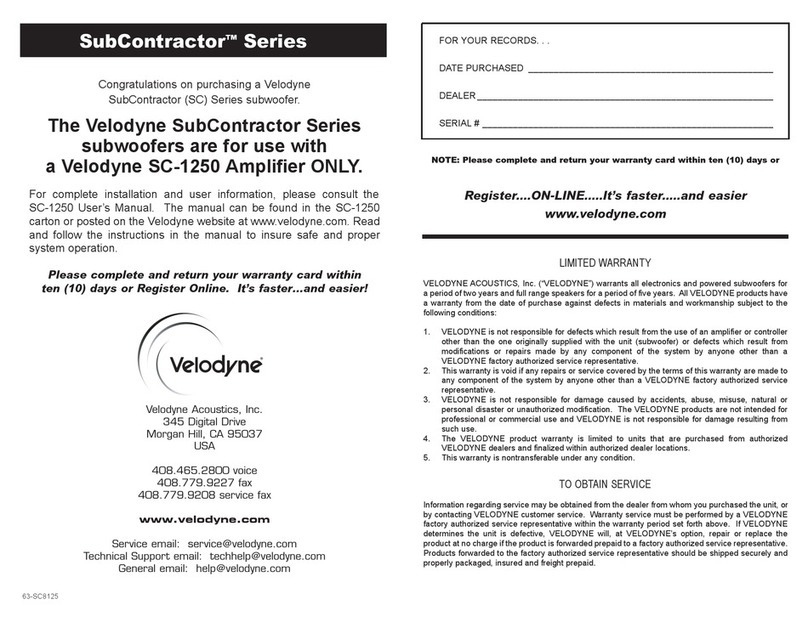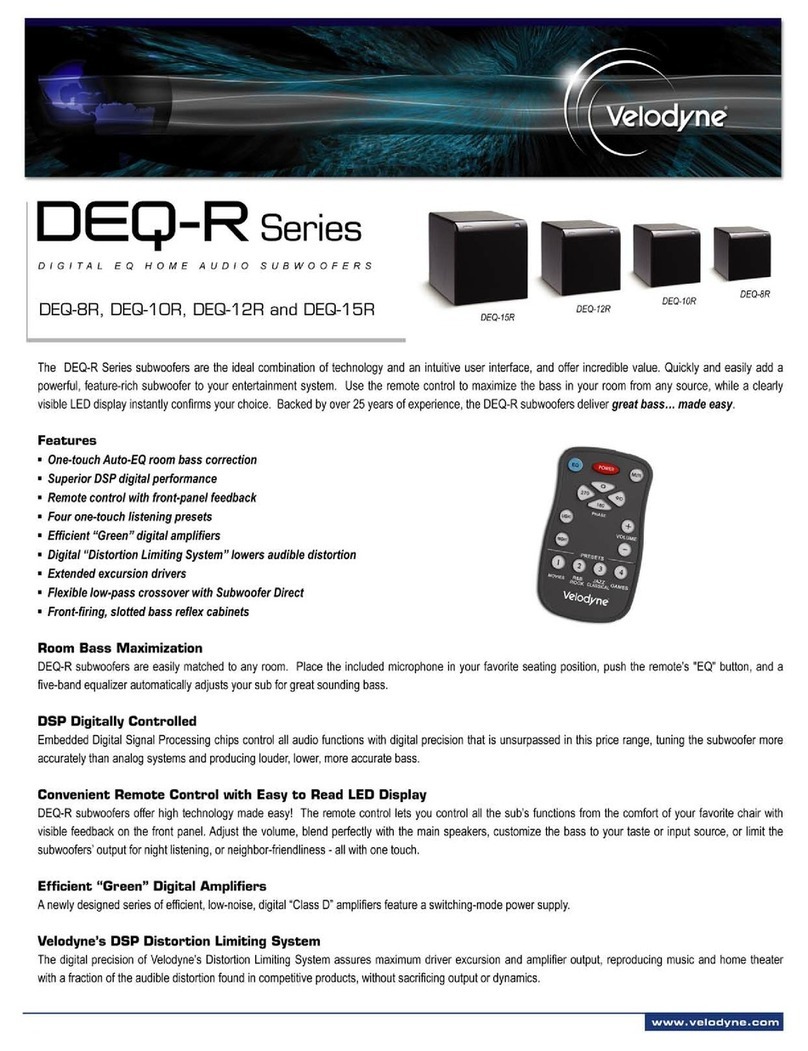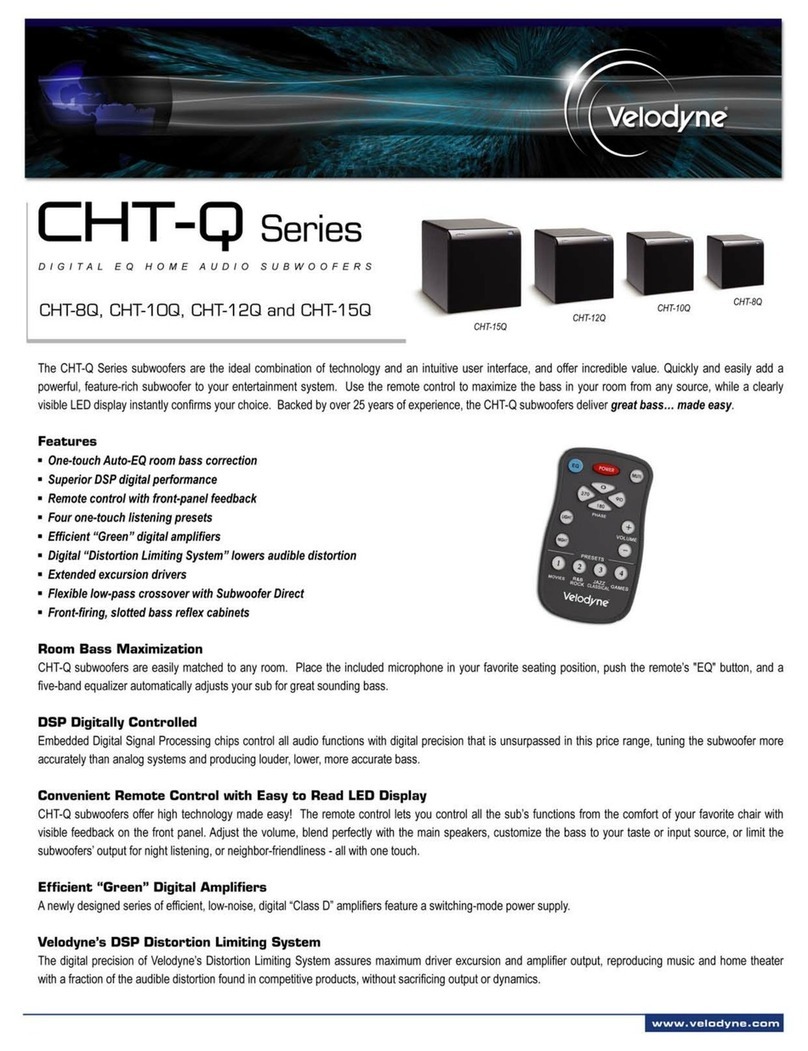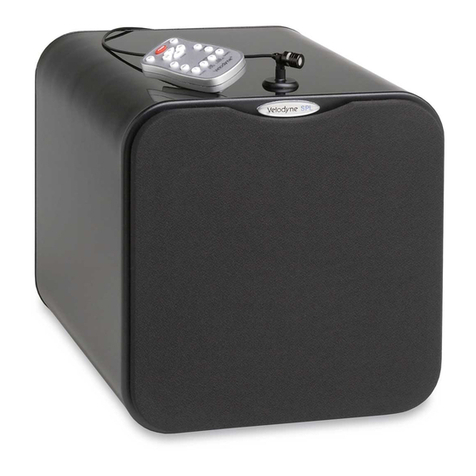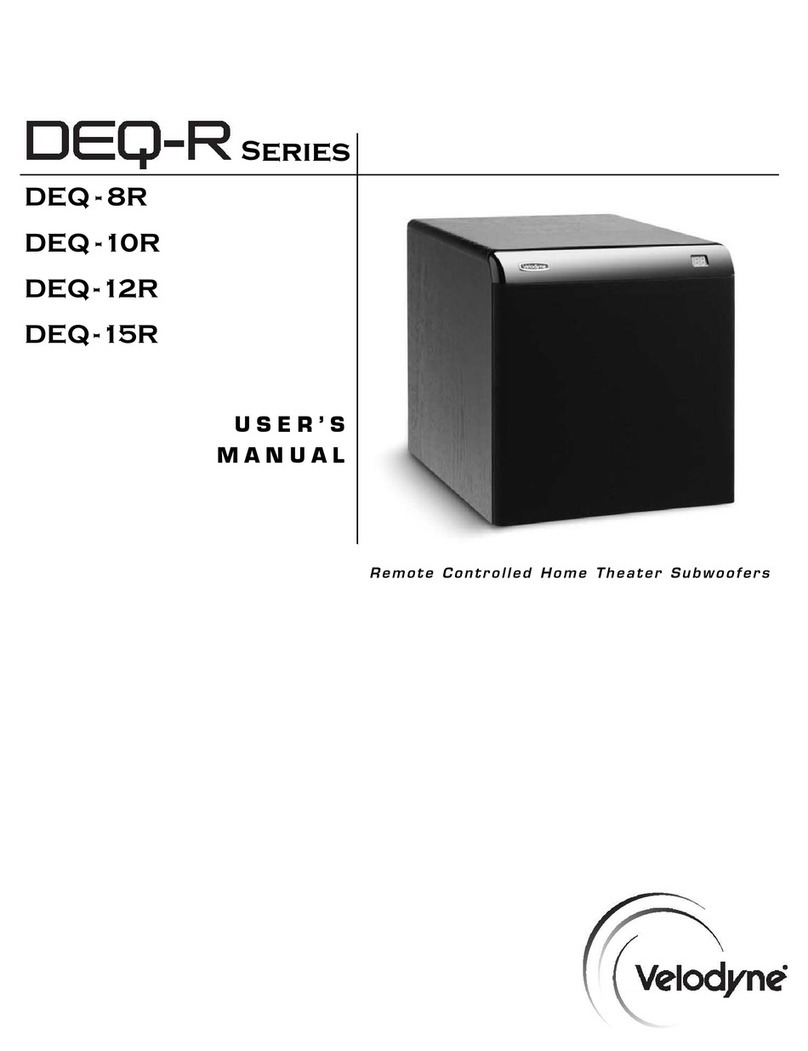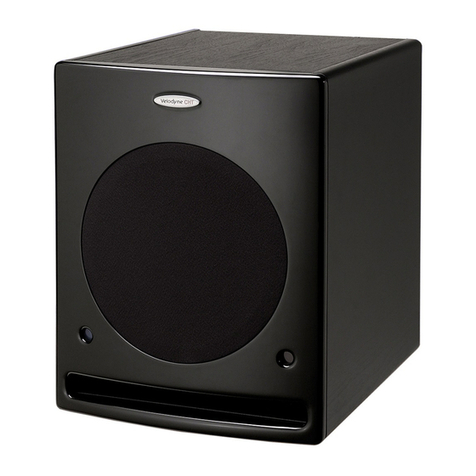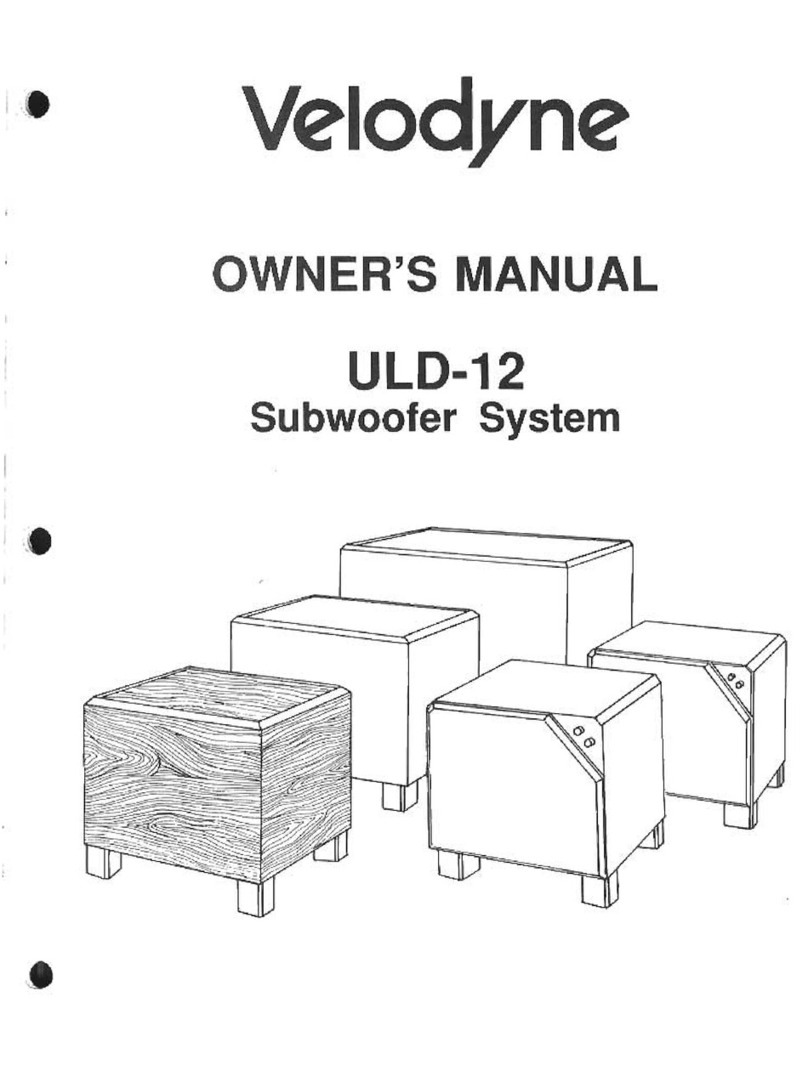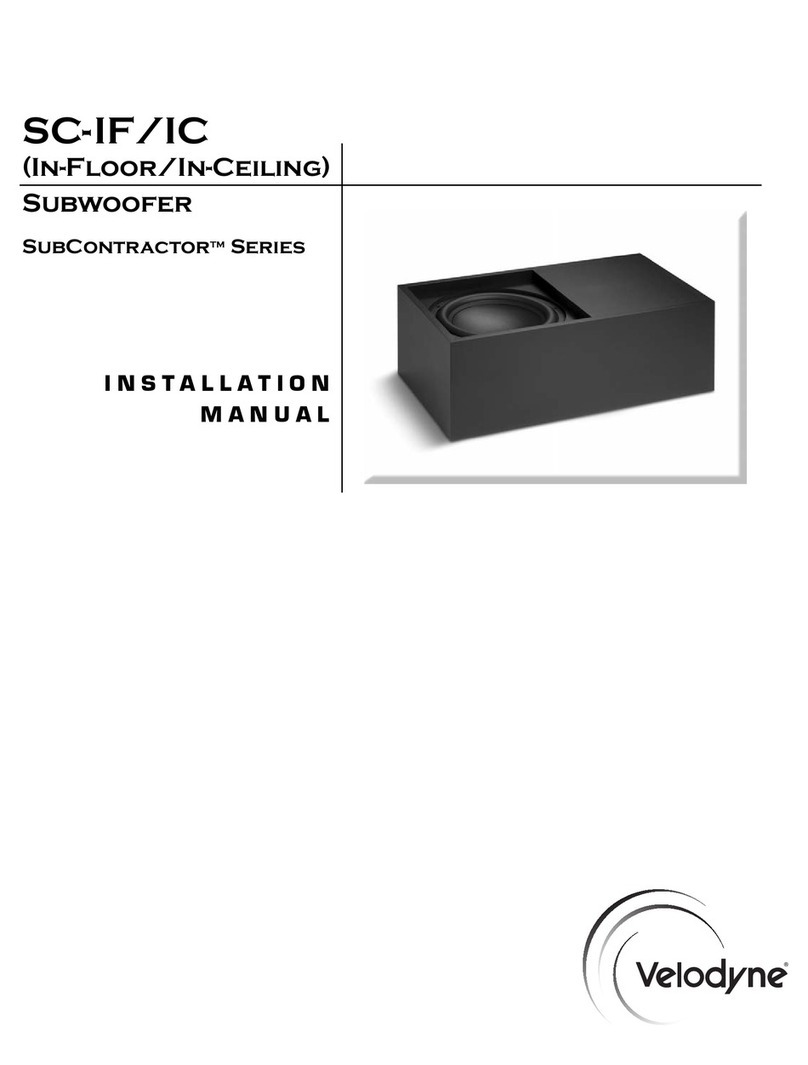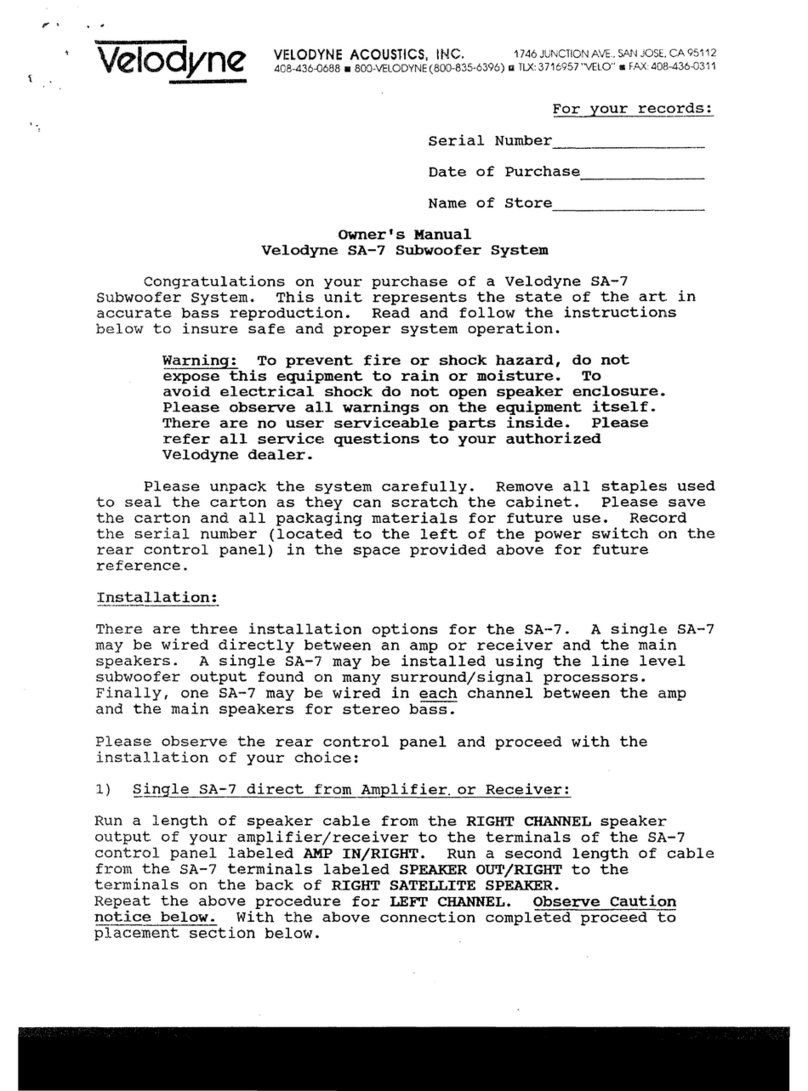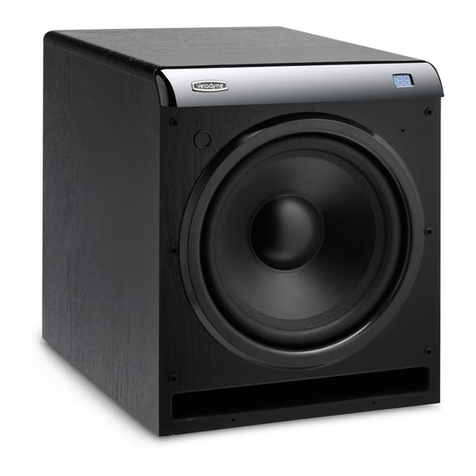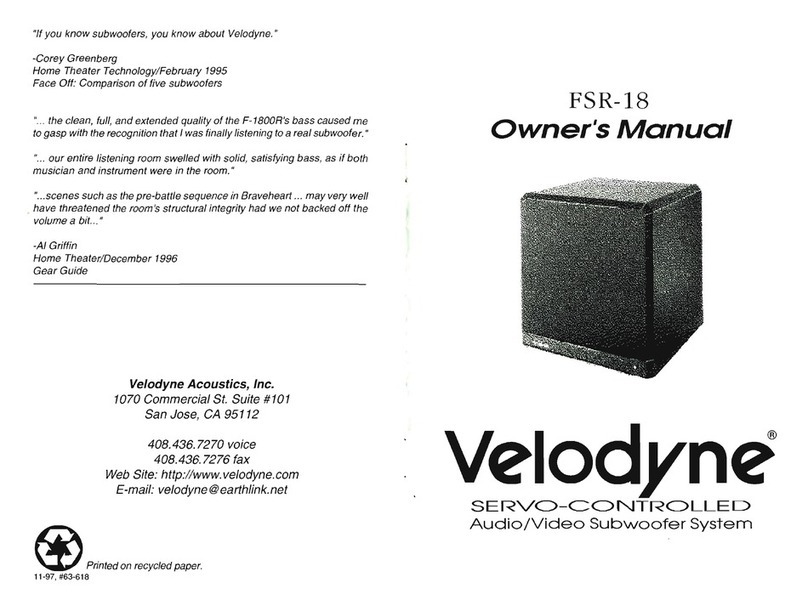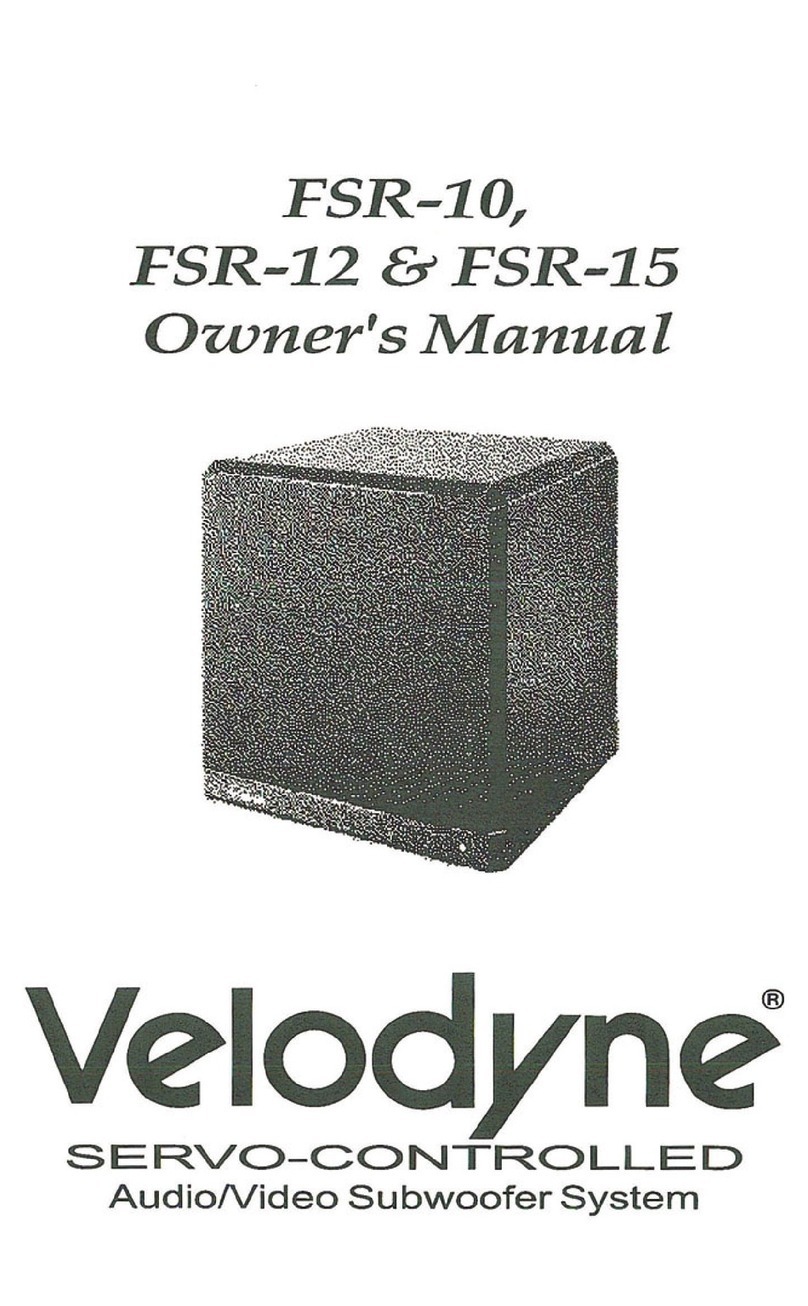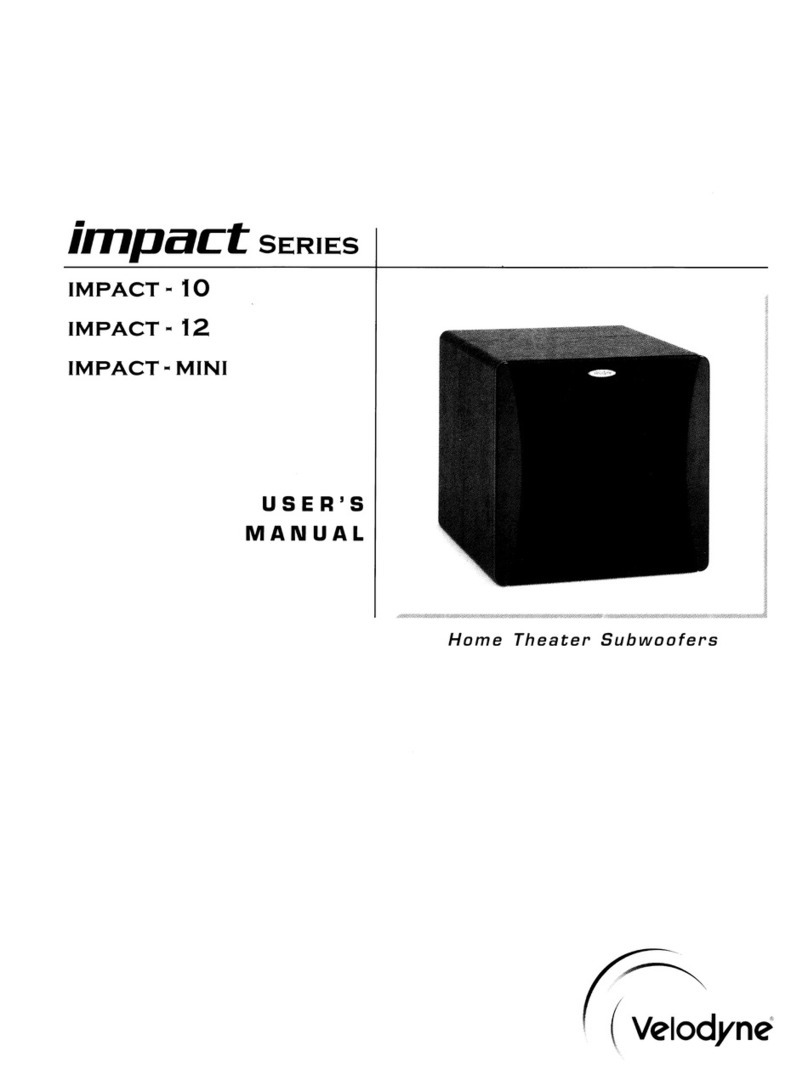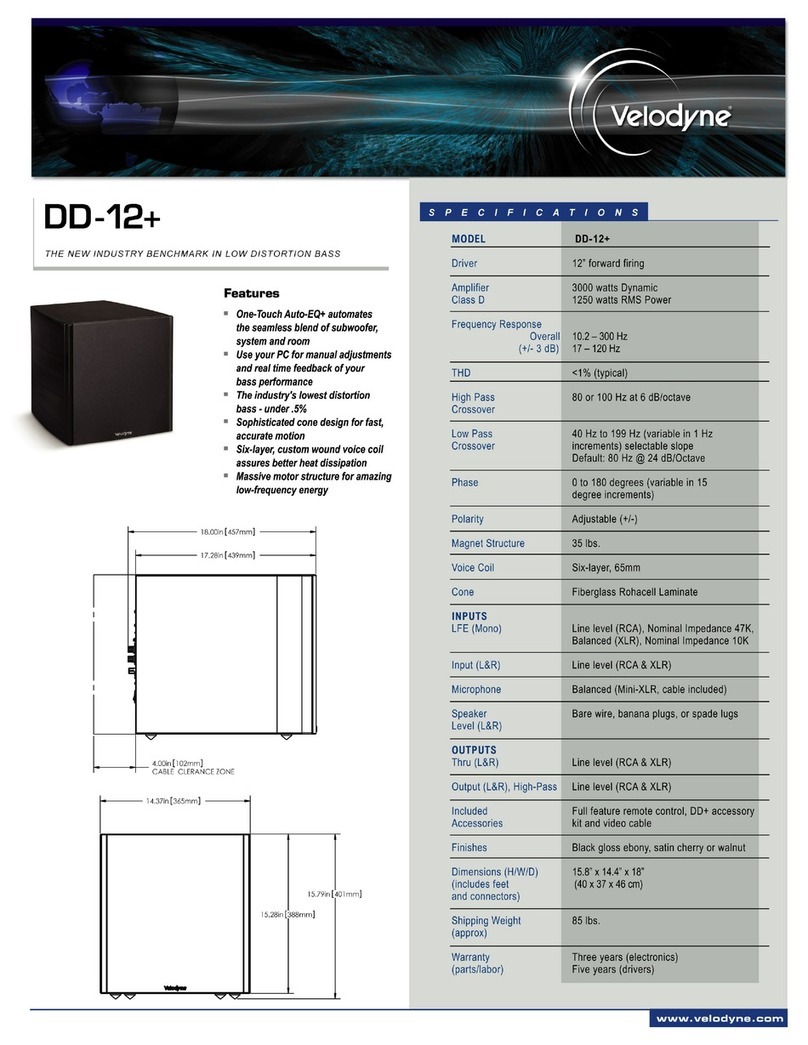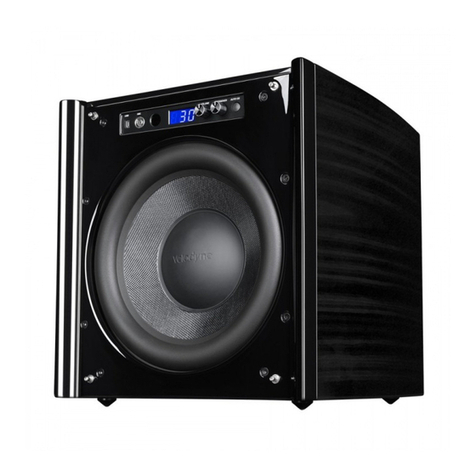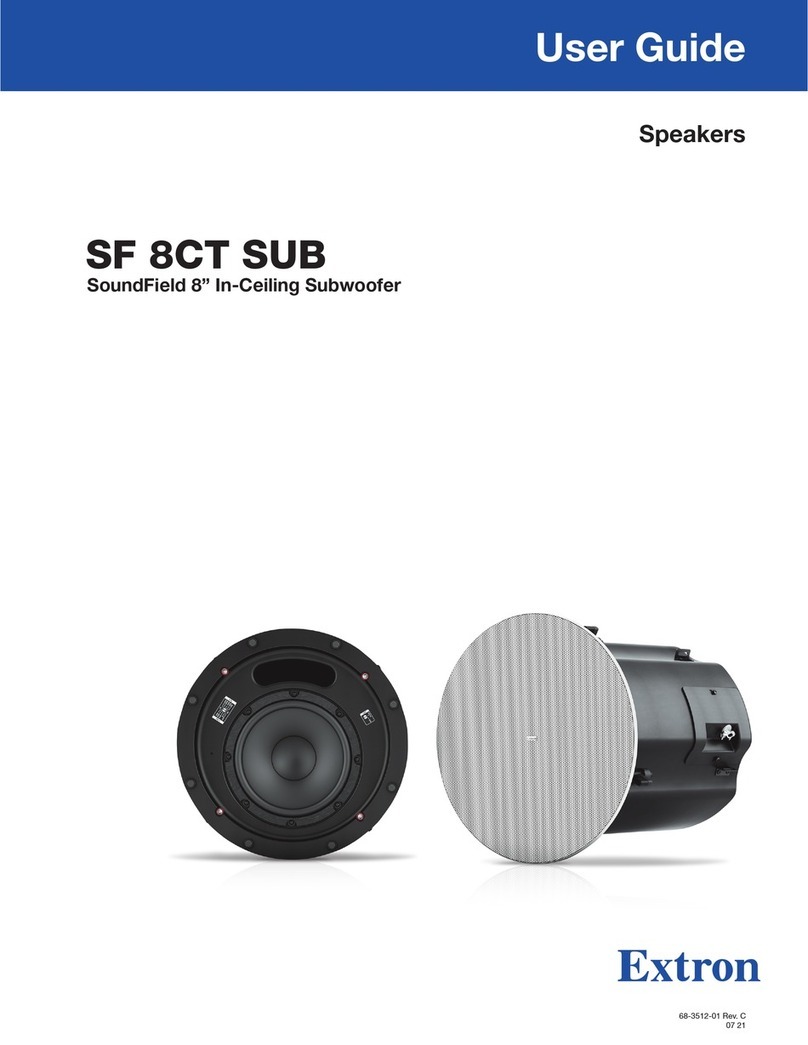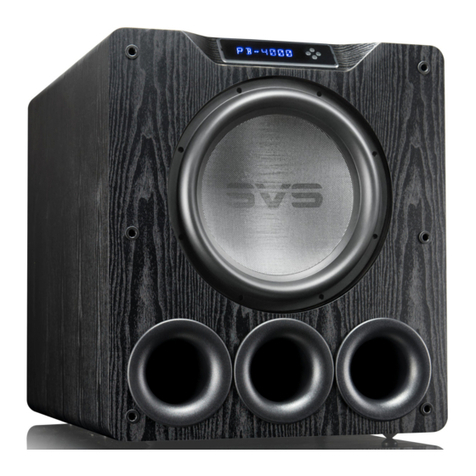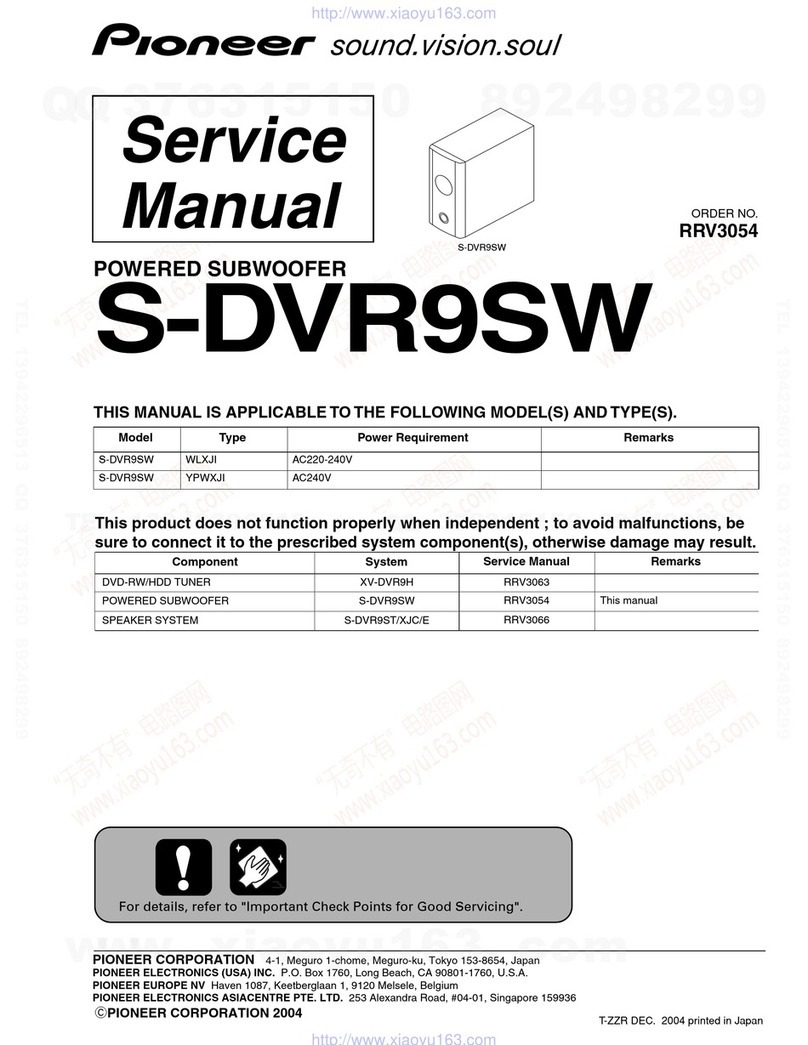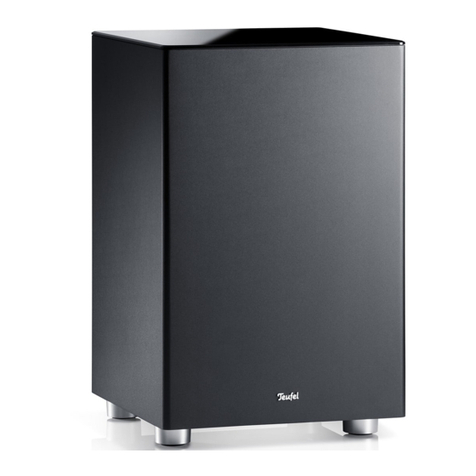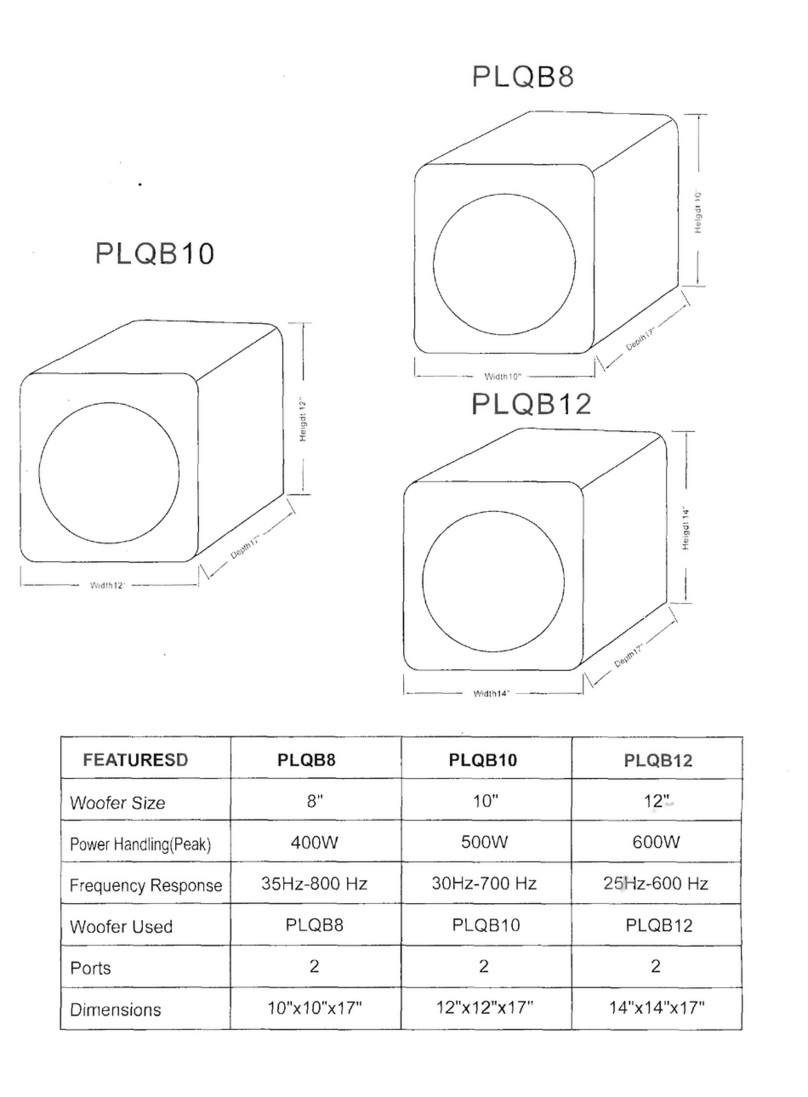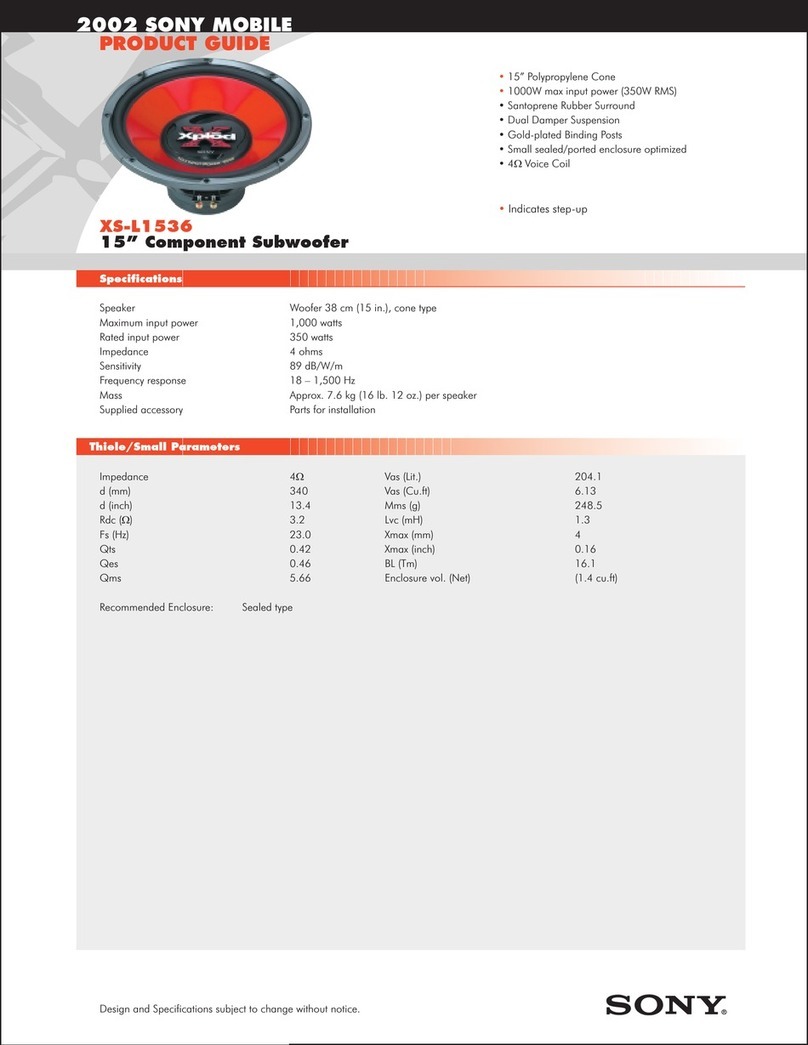
General Subwoofer Placement Guidelines
Refer to the recommended placement diagrams below for general seating and subwoofer placement guidelines.
The seating positions shown in the diagrams below are general guidelines for most room types. Walls, floors and ceilings reinforce bass
response. Sitting near a wall almost always results in the perception of more bass than elsewhere in the room. If your seating position is near
a wall or a corner, the bass may sound overly heavy and boomy, so try moving your listening position more towards the center of the room.
If your seating is at the exact center of the room, it’s possible that the bass will seem weak. If you experience this condition, try moving your
seating position away from the center.
FACE THE GRILLE towards the room’s main seating location in the case of a front-firing subwoofer.
MAKE SURE:
•You can access the controls on the rear of the subwoofer.
•The included 6’ power cord for the subwoofer can safely reach a power outlet.
Square rooms are the most challenging acoustically for low frequencies.
Move your seating location to a more optimal location, if your room layout allows for it.
Single Subwoofer Placement Guidelines
The tips below apply to placing a single subwoofer in your room. Generally, bass frequencies, if reproduced without excessive distortion, are
non-directional, that is, you cannot normally tell where the bass is coming from. However, if the subwoofer’s crossover is set very high, the
subwoofer is played at very high levels so that it distorts, or the subwoofer causes a rattle or other sympathetic vibration to occur, it might give
away its location. Other tips:
PLACE in a CORNER (loudest but not the most accurate) or within a few feet of a wall (smoothest but not the loudest).
AVOID locations far away from a wall, close to the room center, by a door, near a partial-height wall, or behind seating arrangements.
Twin Subwoofer Placement Guidelines
In addition to the above general guidelines for single subwoofer placement, when using TWIN subwoofers follow the guidelines below:
- CENTER OPPOSITE WALL PLACEMENT gives smoothest output and even response throughout the room.
- OPPOSITE CORNER PLACEMENT gives more output and least intrusion into floorplan, but not as smooth or as even
throughout the room.
- 1/4 or 1/3ADJACENT WALL PLACEMENT can give a blend of output and smoothness which could be advantageous in problem rooms.
- DON’T put one subwoofer next to listening seats and one far away, as signals could cancel each other out and limit the output.
In extreme cases, this precedence effect can cause the nearer subwoofer to be localized, i.e. you can tell where the bass is
coming from.
- Preferably place each subwoofer by the satellite speaker of the same channel.
Quad Subwoofer Placement Guidelines
In addition to the above general guidelines for subwoofer placement, when using FOUR subwoofers follow the guidelines below.
FOUR (or more) subwoofers give the best sound in a room.
-CORNER PLACEMENT gives more output and least intrusion into floorplan.
- CENTER WALL PLACEMENT controls room nodes but more intrusion into floorplan.
Don’t put some subwoofers next to listening seats and others far away, as signals could cancel each other out and limit the output. In extreme
cases, this precedence effect can cause the nearer subwoofer to be localized.
[3]
Subwoofer Placement Recommendations Guide
GUIDELINES
